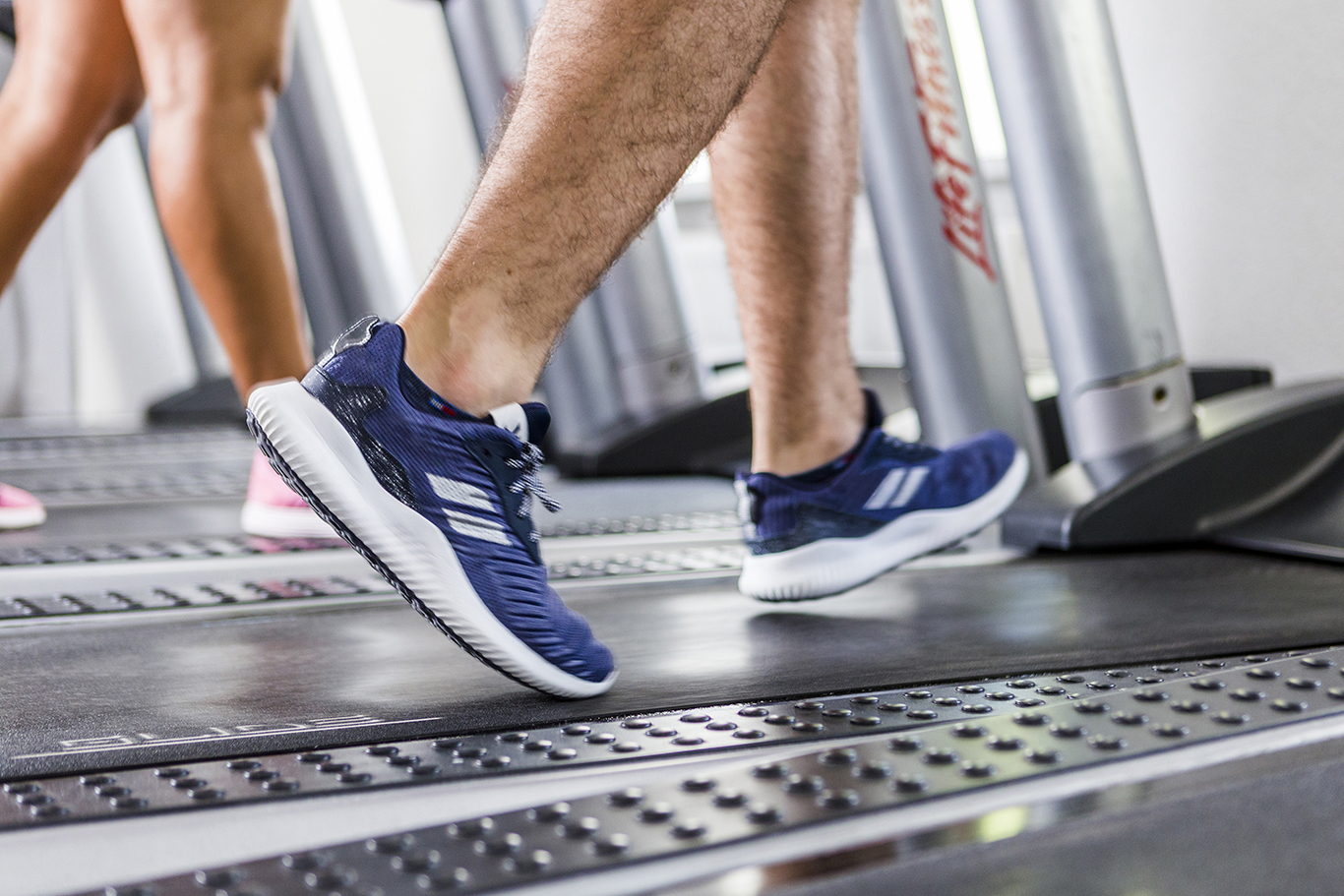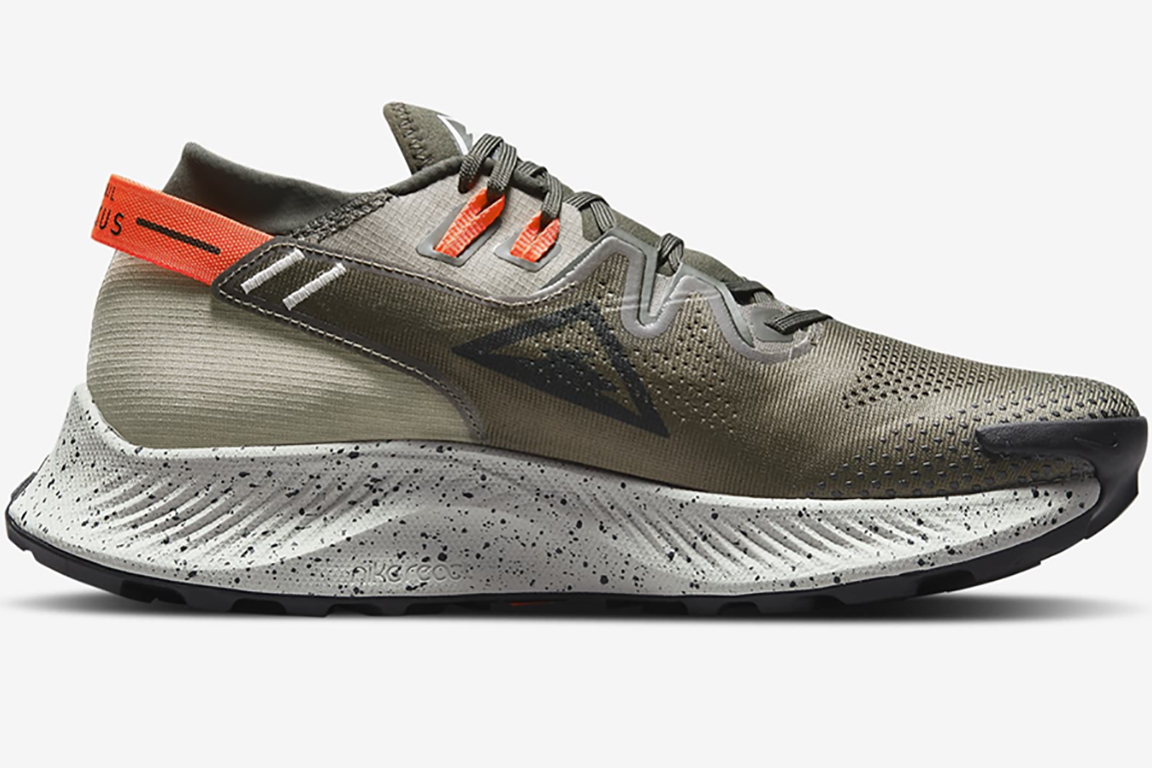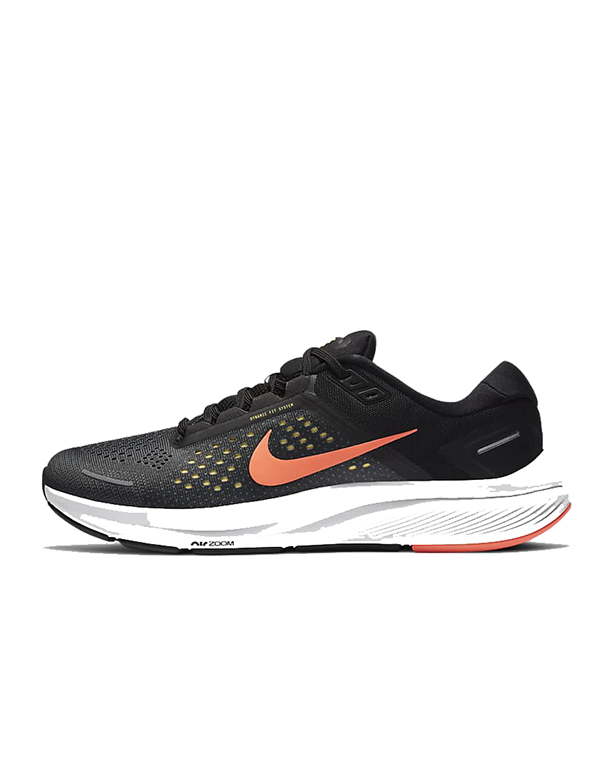
SCORE: 8/10
Weight: 9.0 oz
Heel Drop: 8mm
Pros
- Stable midsole
- Deep cushioning
- Excellent responsiveness
- Comfortable upper
Cons
- Because of deep cushioning, foot strike is quite difficult when doing fats runs.
- Not versatile, just great for slow marathon runs.
Take Away
The Nike Air Zoom Structure 23 rides just like a neutral running shoe. However, because the forefoot zone is extremely flexible, the foot sinks into the midsole. Therefore, picking pace requires more energy. Hence, it is not a good shoe for speed work but works well for slow marathon runs. The Zoom Structure 23 is amazingly comfortable and durable and can also be used as casual wear.
The Nike Air Zoom Structure Instant Impression
The Zoom Structure series has gone through a lot of transformation. The previous Nike Structure models were specifically designed for stability. While the objective to produce stable shoes was achieved, a problem emerged. Runners reported pocking arch when running in them.
The Zoom Structure 23 is nothing close to the other models, especially Zoom Structure 19 going backward. Unlike other models, Nike does not state that Structure 23 is a stability shoe. Nothing like ‘stability’ is mentioned by Nike.
The reason is that to most clients, stability means heavy, firm, and poking arch. All the Structures before the 19 series had these features. Unfortunately, there have been reports of poking arch due to high medial post. I believe Nike did not want runners to think of Nike Structure 23 as the previous Nike Structure models.
Evidently, the Nike Structure 20, 21, and 22 have reduced medial post.
Basically, in shoe anatomy, the medial posts are often denser than the rest of the midsole. Still, the size, shape of the medial post, and the construction material often determine the level of stability it offers. Another function of the medial post is to control pronation by stabilizing the medial rear foot. Hence, expect to find a medial post on all motion control and stability shoes except neutral or cushioned shoes.
Nevertheless, a hard medial post is not a good shock absorber because it can stop pronation completely, yet pronation is part of the natural movement of a person’s body.
It explains why many runners feel stabbing pain when running in the earlier versions of Nike Structure.
The good news is that the Nike structure 23 has reduced the medial post further to make it more comfortable and appealing to a broader market. It has also gone further to reduce the midsole density from the dual-density midsole in Structures 20, 21, and 22 to now single-midsole density. The Structure 19 and its predecessors have a tri-density midsole.
Nike Air Zoom Structure 23 Upper Component
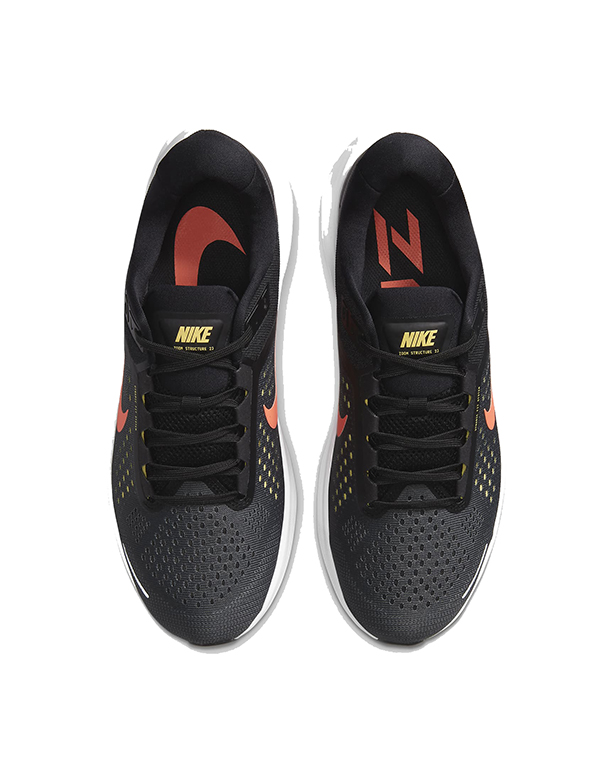
The upper part of the Nike Air Zoom Structure 23 evinces plush and comfort. Instead of Flywire cables, Zoom Structure 23 utilizes the soft mesh panels in the inner layer and perforated mesh on the upper layer.
The large perforations in the upper mesh allow air to penetrate in and out of the shoe to keep the foot cool and dry.
I find Nike Air Zoom Structure 23 to be warm, and I cannot feel my legs sweating even when doing long runs.
The tongue is well padded. The internal heel counter extends into the midsole to offer an excellent heel lockdown. Furthermore, these two features combine to give a satisfying fit.
Nike Air Zoom Structure 23 has a roomy toe box that accommodates a flat foot. It is also spacious enough to allow the toes to spread out naturally. It fits true to size.
Nike Air Zoom Structure 23 Sole Component
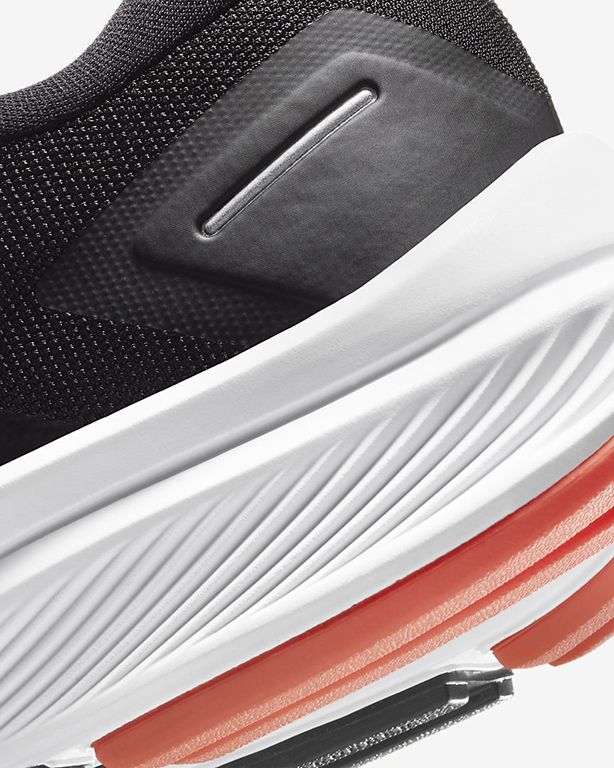
Instead of being firm, the Nike Structure 23 is incredibly soft and quite spongy. It is superbly cushioned and softer than the max cushioned shoes. It is softer than the Bondi 6, Clifton 7, Glycerin 18, Nike Pegasus 36 & 37, and Vomero 14.
Zoom Structure 23 possesses superior flexibility when compared to the previous Zoom Structure series. With Zoom Structure 23, the foot sinks into the soft foam. The midsole foam is not specified, but it feels similar to that used in Vomero 13. With a small and soft medial post, Structure 23 feels completely neutral but superbly stable.
The Nike Air Zoom Structure has airbags underfoot to boost responsiveness. The Zoom airbag is constructed in the forefoot zone, and it complements the soft cushioning of the heel zones to provide a superb foot strike.
The midsole may be softer, but Nike Air Zoom Structure 23 offers excellent stability because as the foot sinks into the midsole, it is supported by the guard rails on the lateral sides of the shoes to keep it in one position. Also, it has a broad midsole base that plants itself convincingly on the ground when landing.
The outsole is a hard carbon rubber, particularly on the heel, and a soft carbon rubber starting from the midsole to the forefoot. Apart from protecting the soft midsole from abrasion, the carbon rubbers provide sufficient traction on pavement, tarmac, and grass in both dry and wet conditions.
The Nike Air Zoom Structure is exceptionally durable. It can handle over 800 miles.
Conclusion
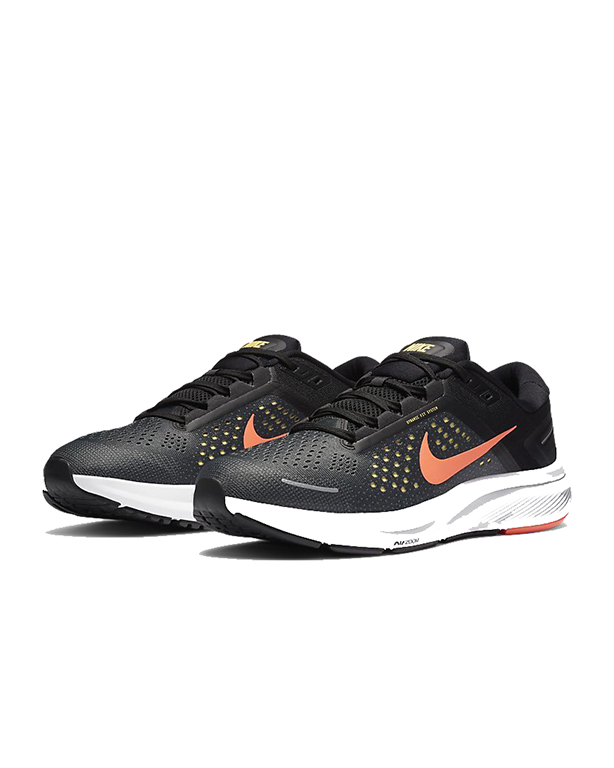
The Nike Air Zoom Structure 23 is different from the previous versions of the Nike Structure series. It is not as stiff as the previous versions. Instead, it is soft and neutral but not for fast runs. It is not as versatile as Structure 22 but can handle road use.
The Nike Air Zoom Structure has a soft and sinking midsole, durable outsole, well-fitting upper, and supportive to overpronators or those with flat feet.
Any qualifying purchases via the Amazon affiliate links earn us small commissions, which will help us continue with the excellent work of bringing you quality shoe reviews.
Reviewed by Dick Harrison
Harrison is an Australian who lives in Sidney. He trains for fitness and the fun of it but does it like a pro. Harrison has the experience of running in various running shoes and understands the technology behind each shoe model he has worn.


